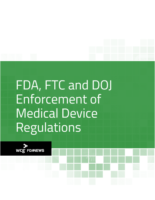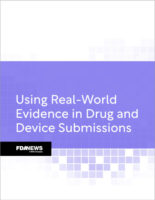
Home » Selecting an LMS: Identifying System Requirements
Selecting an LMS: Identifying System Requirements
Perhaps the most important part of selecting a learning management system (LMS) is determining system requirements. You start by mapping the current training documentation process and testing it to make the system as efficient as possible. This must be done first to avoid transferring any current problems into the new system.
Analysis of the current system should include evaluating the quality, organization and content of the records being maintained. Every document should be identified along with its link(s) to other documents, such as SOPs, batch records, guidelines or other information that may be used in training but might not be labeled as training documents.
The next step is to outline the workflow and list desired system outcomes. A number of questions require resolution including:
- What reports will be required?
- What queries will be required?
- What level of security is necessary?
- What other databases or electronic systems will the LMS need to interact with?
- What is needed to make the system compliant with 21 CFR Part 11?
Once these questions are answered, it’s time to dig into the details: the data the system will record. Most people agree that at least the following should be included in a "bare bones" training documentation system:
- Who received the training;
- Who provided the training;
- The date training was provided and the location of the training;
- The training program content, with course objectives, outlines or lesson plans, and assessments/tests;
- Tests results.
After these minimum requirements have been fulfilled, additional data may need to be added, such as job information, including job description and tasks; prerequisite knowledge and skills; training requirements; SOP requirements; and training effectiveness indicators for both knowledge and skill.
Part 11 Compliance
No matter how you decide to design your LMS, one detail is critical. It must comply with the FDA’s Part 11 regulations.
Part 11 applies to all FDA program areas but does not mandate electronic recordkeeping. It describes the technical and procedural requirements that must be met if an organization chooses to maintain records electronically and use electronic signatures. It consists of two subparts.
Subpart B – Electronic Documentation requires systems to include an audit trail for all electronic records. This means that from the initial creation of a record, the system must keep a log of all changes made, the date and time of change, and the individual who made the change.
Subpart C – Electronic Signatures sets specific requirements for signing documents within the LMS. Electronic signatures must be the equivalent of hand-written signatures and include the printed name of signer, date and time of signing, and meaning of the signature (author, approver, etc.). They must be linked to the records to which they are applied and should appear whenever the record is viewed or printed.
If the LMS is used to store electronic training records, but does not include electronic signatures, then compliance is only required with Subpart B.
In next week’s issue, we’ll cover how to review available LMS programs and how to select the one that is right for your needs.
Contact Information:
Dave Gallup
GMPTraining.com, Inc.
18585 Coastal Highway
Unit 10, #149
Rehoboth, DE 19971
215-870-5665
dagallup@gmptraining.com
www.gmptraining.com
Upcoming Events
-
07May
-
14May
-
30May
